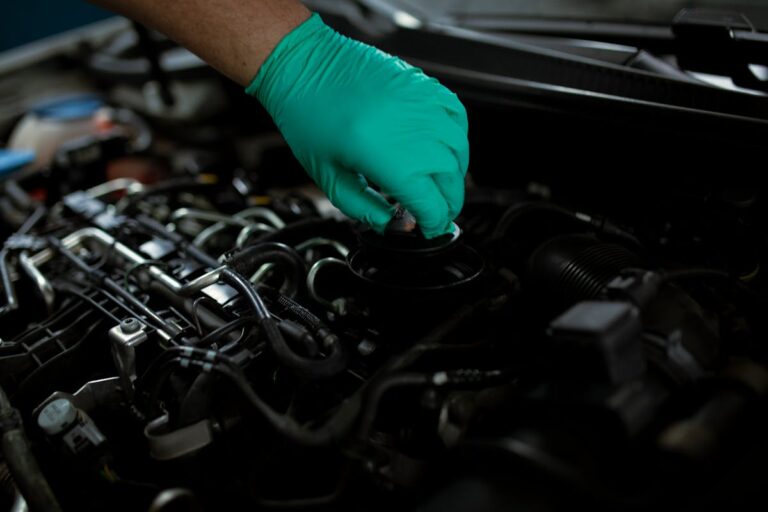The evolution of automatic transmission, from its humble beginnings in the 1920s to the technologically advanced systems in contemporary automobiles, is a fascinating journey. Alfred Horner Munro’s initial patent, the introduction of multiple planetary gearsets by Hydramatic, Powerglide’s two-speed system, and the modern adaptive transmissions, all represent remarkable strides in engineering ingenuity. This intricate history opens up an intriguing discourse on how these developments have shaped and will continue to shape the automotive industry. Interested in uncovering how this complex piece of machinery has revolutionized our driving experience? Let’s explore together.
Early Transmission Systems
The advent of early transmission systems marked a significant milestone in the history of the automobile industry. These systems revolutionized the control mechanism of vehicles, and introduced the concept of gear shifting, a key factor in managing the efficiency of power transmission from the engine to the wheels.
Early transmission systems were primarily manual, requiring the driver to engage and disengage the engine clutch to shift gears. These systems were characterized by their simplicity but had the drawback of demanding constant attention from the driver. The efficiency of these early transmission systems was directly tied to the driver’s skill in gear shifting. Synchronizing the engine’s speed with the desired gear required a nuanced understanding of the vehicle’s performance characteristics.
Improving transmission efficiency became a key focus of automotive engineers, leading to several advancements. Innovations such as the sliding-mesh and the constant-mesh transmission systems were designed to make gear shifting smoother and less error-prone, thereby enhancing overall transmission efficiency.
Inception of Automatic Transmission
Pioneering a new era in vehicular control, automatic transmission emerged as a revolutionary development in the automobile industry. Its conceptualization marked a significant turn in the trajectory of automotive engineering, with early innovations grounded in the pursuit of enhanced convenience and comfort for drivers.
The inception of automatic transmission can be traced back to 1921, when a Canadian inventor, Alfred Horner Munro, patented his invention of an automatic transmission that utilized compressed air rather than hydraulics. However, the lack of a robust power output and the impracticality of compressed air hindered its adoption.
The 1930s witnessed significant mechanical advancements. General Motors engineers Earl Thompson and Harold Barr introduced a semi-automatic transmission model in 1937, marking a significant step towards fully automatic transmission. This innovative design incorporated a fluid coupling and planetary gear system, which allowed the vehicle to shift gears without driver intervention.
The ingenuity of these early endeavors laid the groundwork for further refinements. They represented a pivotal shift in thought, away from manual manipulation of gears and towards automatic control systems. These pioneering steps, powered by relentless innovation and engineering prowess, heralded the dawn of the automatic transmission era.
Hydramatic: A Game Changer
As we progress in our exploration of automatic transmission history, the role of Hydramatic as a transformative force cannot be overstated. Born from revolutionary inception, its impact on the automotive industry has been profound and far-reaching. In the following discussion, we will analyze the genesis of Hydramatic, and assess its considerable influence on the progression of automatic transmission technology.
Hydramatic’s Revolutionary Inception
Marking a pivotal moment in automatic transmission history, Hydramatic’s inception revolutionized the automobile industry. This profound change was brought about by the unique combination of Hydramatic features, which were unheard of at the time. The Hydramatic system was the first truly automatic transmission, featuring fluid coupling and a set of multiple planetary gear sets that provided four forward speeds and reverse.
The Hydramatic system was a marvel, designed to handle the high torque of large engines. It displayed unparalleled resilience and durability, setting the standard for future automatic transmissions. The Hydramatic system was also praised for its smooth, seamless gear shifts, which provided an effortless and comfortable driving experience.
The Hydramatic legacy echoes through the decades. Its design principles and concepts have been adopted and refined by subsequent automatic transmission models. The Hydramatic’s inception was not just the birth of a new transmission system, but also the genesis of a new era in automotive technology. Today, the Hydramatic’s influence is clearly evident in the sophistication and complexity of modern automatic transmissions. Its pioneering spirit continues to inspire and drive advancements in automatic transmission technology.
Impact on Auto Industry
The introduction of the Hydramatic system fundamentally redefined the automobile industry, ushering in a new era of innovation and technological advancement. This revolutionary automatic transmission technology was not just a technical marvel but a game-changer, leading to a seismic shift in the industry dynamics.
The Hydramatic served as a catalyst, intensifying market competition. Competing manufacturers were compelled to accelerate their research and development efforts, leading to the introduction of more refined automatic systems. The ripple effects of this competition extended beyond the industry, fostering an environment of rapid technological progress that we still witness today.
The most significant impact, however, was on consumer convenience. The Hydramatic system, by eliminating the need for manual gear shifting, offered a driving experience that was smoother, easier, and more comfortable. This was a stark contrast to the previous norm of manual transmission, which demanded a higher level of skill and effort from the driver. Consumers quickly embraced this newfound convenience, driving demand for automatic vehicles and further propelling the industry’s growth.
Powerglide: The Two-Speed Solution
As we shift from the Hydramatic breakthrough, the next pivotal stage in automatic transmission history is the Powerglide’s development. This segment will elucidate the intricacies of its two-speed mechanism, providing a detailed explanation of its functioning and design. In addition, we will analyze the profound impact Powerglide had on the automotive industry, effectively reshaping transmission technology.
Powerglide’s Initial Development
In the domain of automatic transmission history, an advancement worthy of attention is the initial development of Powerglide, dubbed as the two-speed solution. This revolutionary development, initiated by General Motors (GM) in the early 1950s, aimed to lay the groundwork for a simplified, yet efficient transmission system that would be accessible to a large number of consumers.
The primary focus of the Powerglide design was to streamline the complex mechanisms of existing transmission systems. GM’s engineers sought to reduce mechanical complexity while guaranteeing peak transmission performance, leading to the birth of the two-speed automatic transmission. The design was centred around two primary gears, connected to a fluid coupling device, which was a significant departure from the multiple gear systems prevalent in that era.
To validate the efficiency and reliability of the Powerglide design, extensive Powerglide testing was undertaken. This involved rigorous performance evaluation under various driving conditions to guarantee the transmission could handle the demands of the everyday driver. The results of these tests were promising, showing that the Powerglide was capable of delivering smooth, efficient performance despite its simplified design.
Two-Speed Mechanism Explained
Delving into the mechanics of the two-speed solution presented by Powerglide, it is essential to appreciate its simplicity and efficiency. The system operates on a principle of fluid dynamics, coupled with carefully calculated gear ratios, to provide smooth and efficient gear shifting.
The Powerglide’s two-speed mechanism primarily consists of a low and a high gear. The low gear, which is engaged at standstill and during acceleration, has a relatively high gear ratio. This allows for increased torque to the wheels, providing the necessary power for the vehicle to overcome inertia. As the vehicle gains speed, the high gear with a lower gear ratio is seamlessly engaged, capitalizing on the vehicle’s momentum to maintain speed with lower engine RPM, thereby enhancing fuel efficiency.
The shift between these two gears is facilitated by fluid dynamics. The Powerglide uses a torque converter, a type of fluid coupling, to transfer power from the engine to the transmission. This fluid coupling allows for variable gear ratios, smoothing out the transfer of power and ensuring a seamless shift between gears.
This two-speed solution, in its simplicity and efficiency, revolutionized the automatic transmission landscape, setting the stage for further developments in this field.
Powerglide’s Impact on Industry
Undeniably, the introduction of Powerglide’s two-speed solution had a profound impact on the automobile industry. The powerglide advantages were manifold – simplicity, reliability, and cost-effectiveness, which fundamentally changed the landscape of automatic transmission systems. By reducing the complexity of transmissions, Powerglide made automatic vehicles more accessible and affordable to the common man, consequently democratizing the industry.
The Powerglide’s legacy extends beyond just its technical prowess; it substantially influenced the industry’s approach towards designing transmission systems. It became a model of efficiency, demonstrating that fewer gears could still yield high performance and reliability. This principle of simplicity and effectiveness began to permeate the industry, leading to significant advancements in transmission technology.
Moreover, Powerglide’s two-speed solution laid the groundwork for future transmission systems. Its innovative design and functionality served as a benchmark for subsequent developments, inspiring an era of innovation and exploration in the field of automatic transmission. From a broader perspective, Powerglide’s impact transcended the boundaries of the automobile industry, embodying the spirit of innovation and progress that continues to propel technological advancements even today. As a result, Powerglide’s impact on the industry goes beyond its mechanical benefits, leaving a lasting legacy of innovation and change.
Torque Converter Innovations
The evolution of the torque converter has played a pivotal role in shaping automatic transmission technology. Over the years, there has been a continuous push for the development of more efficient and diverse torque converter types.
In the early stages, the primary focus was on improving torque converter efficiency. The goal was to diminish the slippage that occurred between the engine and transmission, thereby reducing energy loss. This led to the design of the lock-up torque converter, which fundamentally locked the engine’s rotation speed to the transmission’s, boosting efficiency considerably.
Simultaneously, engineers pursued variability in torque converter types to cater to the diverse needs of different vehicles. The advent of the variable vane torque converter was a significant milestone in this development. This innovation introduced adjustable blades within the converter, allowing for more precise control and better performance.
These innovations have not only enhanced performance but also contributed to the overall fuel efficiency of vehicles. As these advancements continue, the role of torque converters in automatic transmissions remains paramount, setting the stage for future improvements in this field. However, it is important to note that the development of torque converters is not an isolated phenomenon, but part of the broader evolution of automatic transmission technology.
Advent of Electronic Control Units
In the latter part of the 20th century, the advent of Electronic Control Units (ECUs) marked a significant shift in the landscape of automatic transmission technology. These ECUs, a result of rapid electronic advancements, were incorporated into automatic transmissions to manage and control complex operations.
ECUs are fundamentally the brain of the transmission system, with control algorithms dictating the operation of various elements such as the torque converter clutch and shift timing. The use of ECUs allowed for unprecedented control over these elements, leading to improvements in efficiency, reliability, and performance of automatic transmissions.
The implementation of ECUs also led to the development of adaptive transmissions. These systems utilize sensors and control algorithms to ‘learn’ driving habits and conditions, and adjust transmission operations accordingly. This not only improved the driving experience but also increased the longevity of the transmission.
The introduction of ECUs in automatic transmission systems also paved the way for the development of more advanced transmission technologies. It facilitated the integration of other electronic components, further enhancing control and improving overall vehicle performance. Consequently, the advent of ECUs truly revolutionized automatic transmission technology, setting a new standard for what could be achieved.
Continuously Variable Transmissions (CVTs)
As automatic transmissions continued to evolve, Continuously Variable Transmissions (CVTs) emerged as a groundbreaking development. The CVT, unlike its traditional counterparts, does not operate with a fixed set of gear ratios. Instead, it allows an almost infinite variability between the highest and lowest available gears, with no discrete steps or shifts.
At the heart of most CVTs is the innovative belt technology that enables this infinite variability. A metal belt runs on two pulleys that can change their diameter, effectively altering the gear ratio. As engine speed varies, the pulleys adjust their width, allowing the belt to ride higher or lower as needed, thereby continuously varying the transmission ratio.
This system, while mechanically simpler than traditional automatic transmissions, boasts significant efficiency improvements. By maintaining the engine at its most efficient revolutions per minute (RPM) for a range of vehicle speeds, CVTs optimize fuel efficiency and reduce emissions. They also provide a smoother driving experience, eliminating the noticeable shifts of fixed gear transmissions.
Despite their benefits, CVTs have faced challenges, including durability concerns and driver perception issues, which have influenced their adoption rate. Nonetheless, their role in the history of automatic transmission is undeniably significant.
Modern Automatic Transmission Technologies
Emerging from the evolutionary timeline of automatic transmissions, modern automatic transmission technologies have become increasingly complex and diversified. Among these advancements, adaptive shifting and dual clutch systems stand out due to their significant contributions to enhancing vehicle performance.
Adaptive shifting is a technology that adjusts the gear changing behavior based on driving conditions and driver habits. It employs advanced software to analyze parameters such as throttle input, engine load, and road gradient, tailoring the shift pattern accordingly. This results in smoother changes and improved fuel efficiency, thereby optimizing the driving experience.
Dual clutch systems, on the other hand, employ two separate clutches for odd and even gear sets. One clutch disengages when the other engages, facilitating seamless gear shifts with minimal power loss. This technology combines the comfort of automatic transmissions with the efficiency and sportiness of manual transmissions. However, it requires intricate control algorithms and robust hardware, making it a technologically intensive solution.
Future Trends in Automatic Transmissions
Building upon the advancements in modern automatic transmission technologies, the landscape of future trends in automatic transmissions is set to be very dynamic and interesting. One significant trend lies in the integration of automatic transmissions with electric drivetrains. With the rise of electric vehicles (EVs), automatic transmissions will undergo profound transformations to sync with electric drivetrains’ distinct characteristics.
The shift towards EVs necessitates transmissions that can effectively handle the instant torque provided by electric motors, thereby enabling smoother, more efficient operation. Transmission systems will also need to adapt to the requirements of regenerative braking, a critical feature in EVs that recovers and reuses energy during deceleration.
Hybrid systems represent another key future trend. These systems combine the best attributes of conventional and electric drivetrains, offering both power and efficiency. Future automatic transmissions will increasingly leverage these hybrid systems, facilitating seamless changes between electric and internal combustion engine modes. This will require advanced control strategies and innovative design approaches to guarantee peak performance and efficiency.
Frequently Asked Questions
What Is the Cost Difference Between Automatic and Manual Transmissions?
In a cost analysis of transmission types, automatic transmissions are typically more expensive due to their complex design and technology, while manual transmissions are generally cheaper, driven by straightforward mechanics and easier maintenance.
How Often Does an Automatic Transmission Need Maintenance?
Automatic transmission maintenance typically requires service every 60,000 to 100,000 miles. This includes fluid changes to guarantee peak performance. However, the exact frequency can vary depending on the vehicle’s make and driving conditions.
Is It More Fuel Efficient to Use Automatic Transmissions?
Fuel efficiency largely depends on the specific model and technology of the transmission. Recent advancements in automatic transmissions have greatly improved their fuel efficiency, often outperforming manual transmissions with regard to fuel economy.
Are Automatic Transmissions More Reliable Than Manual Transmissions?
The reliability of automatic transmissions versus manual ones largely depends on transmission longevity and shifting performance. With proper maintenance, both can be reliable, but automatic transmissions often excel in consistent shifting performance.
Can You Switch a Manual Transmission to an Automatic?
Yes, a manual transmission can be switched to an automatic through a conversion process. However, this is a complex task requiring expert knowledge due to various factors like transmission compatibility and vehicle-specific requirements.





